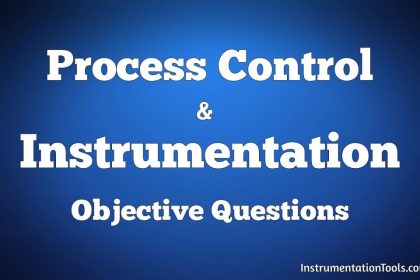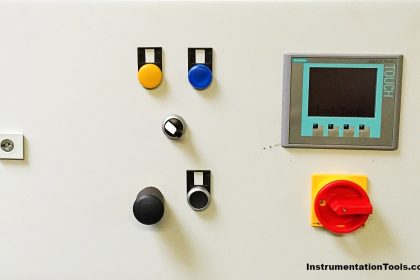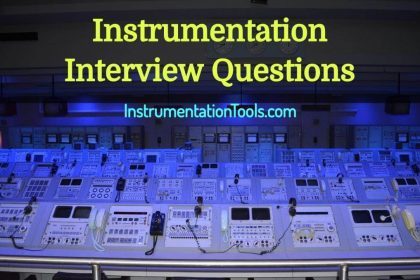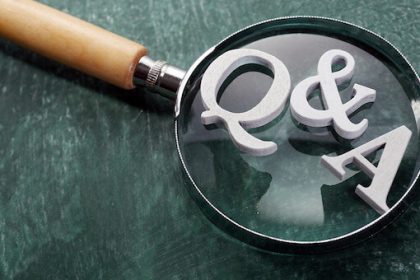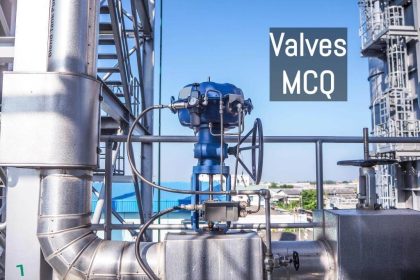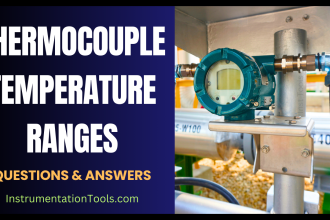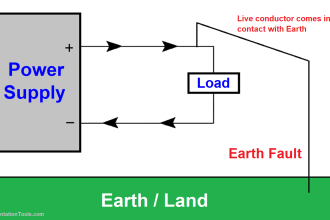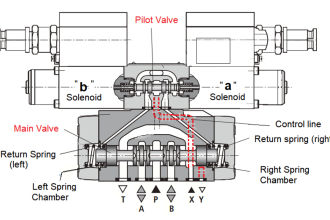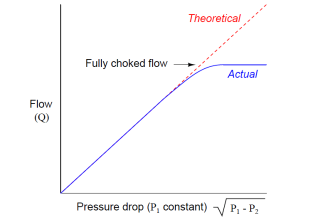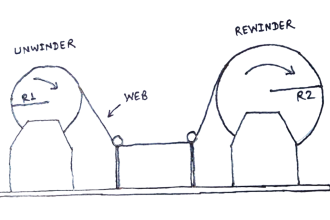Check out the 150+ measuring instruments questions and answers for instrumentation engineers and technicians. Test your skills now.
Measuring Instruments
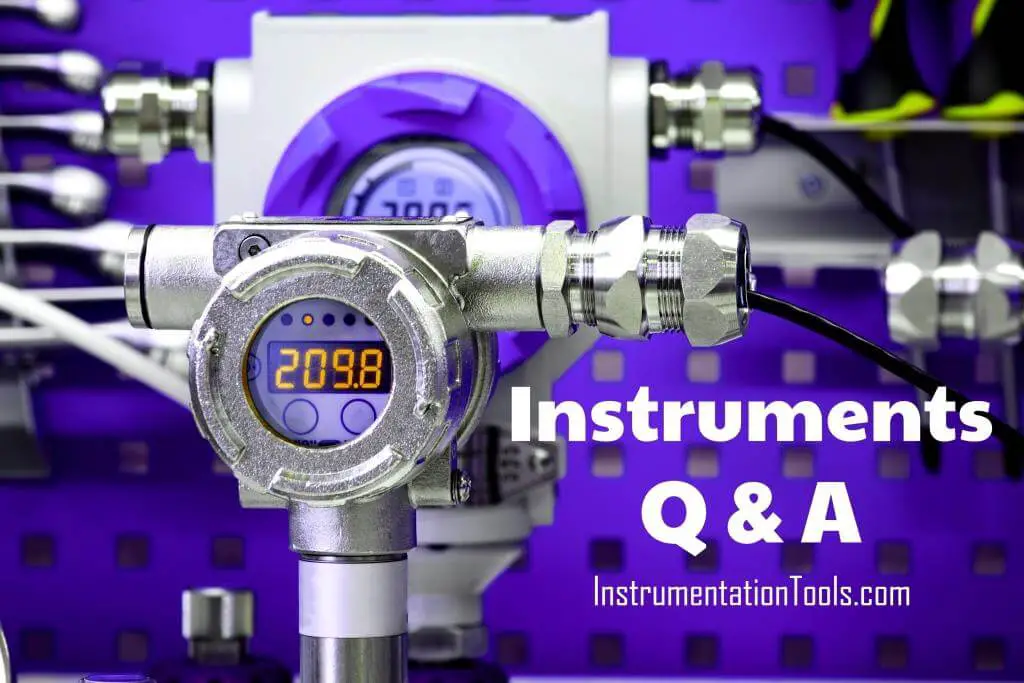
Find the sample 25 questions from the measuring instruments quiz. Click on the below start button to get complete 150+ questions with answers.
Question 1:
A cooling water system is cooling a lube oil heat exchanger. The cooling water system surge tank level is being measured using a differential pressure level detector that has been calibrated at the current water temperature in the tank.
A leak in the heat exchanger results in lube oil collecting in the surge tank.
Assuming that the temperature of the contents in the surge tank does not change, the indicated surge tank level will be __________ than actual surge tank level because lube oil is __________ than water.
A) higher; less dense
B) lower; more dense
C) higher; more dense
D) lower; less dense
Question 2:
In contrast to a thermocouple, a resistance temperature detector
A) uses a single type of metal or alloy in the sensing element.
B) is commonly placed in direct contact with the monitored substance.
C) does not require an external power supply for temperature indication.
D) is used in high temperature applications
Question 3:
As water flows through a venturi flow element, the __________ pressure and the __________ velocity of the fluid occurs at the throat of the venturi.
A) highest; highest
B) highest; lowest
C) lowest; highest
D) lowest; lowest
Question 4:
A cooling water system is operating at a steady-state flow rate of 700 gpm with 60 psid across the flow transmitter venturi.
If cooling water flow rate is increased to 1,000 gpm, differential pressure across the flow transmitter venturi will be…
A) 244.8 psid.
B) 171.4 psid.
C) 85.7 psid.
D) 122.4 psid.
Question 5:
Many reactor vessel water level instruments are designed with a condensing chamber in the reference leg.
The purpose of the condensing chamber is to
A) prevent reference leg flashing during a rapid depressurization of the reactor vessel.
B) ensure the reference leg temperature remains near the temperature of the water in the reactor vessel.
C) provide a source of makeup water to the reference leg during normal operations.
D) provide reference leg compensation for the reactor pressure exerted on the variable leg.
Question 6:
If shorting occurs within a resistance temperature detector, the associated indication will fail
A) low.
B) as is.
C) high.
D) to midscale.
Question 7:
A flow instrument for an operating cooling water system was calibrated with the differential pressure flow detector equalizing valve slightly open.
If the valve is subsequently closed, flow indication will
A) increase and stabilize at the actual flow rate.
B) increase and stabilize above the actual flow rate
C) decrease and stabilize above 0 gpm.
D) decrease and stabilize at 0 gpm.
Question 8:
A simple two-wire resistance temperature detector (RTD) is being used to measure the temperature in a water system.
Copper extension wires run from the RTD to a temperature measuring instrument 40 feet away.
If the temperature of the extension wires increases, the electrical resistance of the extension wires will __________; and the temperature indication will __________ unless temperature compensation is provided.
A) decrease; increase
B) decrease; decrease
C) increase; increase
D) increase; decrease
Question 9:
If the pressure sensed by a bourdon tube increases, the curvature of the detector will __________ because the greater force is being applied to the __________ curve of the detector.
A) increase; outer
B) decrease; inner
C) decrease; outer
D) increase; inner
Question 10:
A leak develops in the high-pressure side of a flow detector.
What effect does the leak have on the affected flow indication?
A) The measured ΔP will increase, causing indicated flow to decrease.
B) The measured ΔP will decrease, causing indicated flow to increase.
C) The measured ΔP will decrease, causing indicated flow to decrease.
D) The measured ΔP will increase, causing indicated flow to increase.
Question 11:
A resistance temperature detector (RTD) is used in a balanced bridge circuit to indicate temperature.
If the RTD develops an open circuit (bridge circuit remains intact), temperature indication will fail
A) to midscale.
B) high.
C) low.
D) as is.
Question 12:
Because of a thermocouple temperature display failure, the millivolt output of a thermocouple circuit is being converted to a temperature value using conversion tables.
The tables are based on a thermocouple reference junction temperature of 32°F.
The actual reference junction is located in a panel that is maintained at 120°F.
Room temperature surrounding the panel is 80°F.
What adjustment must be made to the temperature value taken from the conversion tables to calculate the actual temperature at the measuring tip of the thermocouple?
A) Subtract 48°F.
B) Add 88°F.
C) Add 48°F.
D) Subtract 88°F.
Question 13:
Which one of the following flow measuring elements produces the largest unrecoverable head loss when used in an operating fluid system?
A) Orifice
B) Venturi
C) Flow nozzle
D) Pipe elbow
Question 14:
The density compensating input to a steam flow instrument is used to convert volumetric flow rate into
A) mass flow rate.
B) velocity flow rate.
C) differential flow rate.
D) gallons per minute.
Question 15:
A pipe elbow (top view) in an operating water system.
At which one of the following locations is the highest pressure sensed?
(Assume a constant pipe diameter and zero head loss in this section of pipe.)
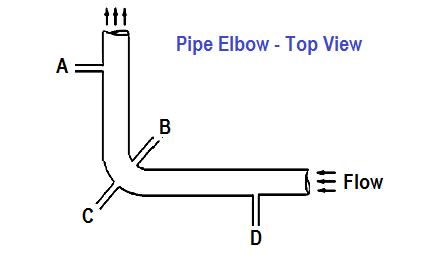
A) Point C
B) Point B
C) Point D
D) Point A
Question 16:
If the density input to a density-compensated steam flow instrument rapidly fails high, the indicated flow will.
A) increase and stabilize at a new higher value.
B) decrease and stabilize at a new lower value.
C) increase temporarily, then return to its initial value.
D) decrease temporarily, then return to its initial value.
Question 17:
If the flow rate through a differential pressure (D/P) detector flow nozzle doubles, by what factor would the D/P increase?
A) √2
B) 8
C) 2
D) 4
Question 18:
What happens to the pressure and velocity of water as it passes through a venturi?
A) Pressure remains constant, but the velocity increases as the diameter of the venturi decreases.
B) Pressure increases, but the velocity decreases as the diameter of the venturi decreases.
C) Pressure increases, but the velocity decreases as the diameter of the venturi increases.
D) Pressure decreases, but the velocity remains constant as the diameter of the venturi increases.
Question 20:
If the orifice in a differential pressure (D/P) flow sensor erodes such that the orifice opening becomes larger, indicated flow rate will __________ due to a __________ D/P across the orifice.
(Assume actual flow rate remains the same.)
A) decrease; larger
B) increase; smaller
C) decrease; smaller
D) increase; larger
Question 21:
An orifice is being used in an operating cooling water system to measure flow rate. Which one of the following will cause the differential pressure sensed across the orifice to decrease?
A) System flow rate decreases
B) A leak develops in the low pressure sensing line.
C) System pressure decreases.
D) Debris becomes lodged in the orifice.
Question 22:
How will flow rate indication be affected if the equalizing valve for the associated differential pressure sensor is fully opened?
A) Increase to the maximum value
B) Decrease temporarily, and then return to initial value.
C) Decrease to the minimum value.
D) Increase temporarily, and then return to initial value.
Question 23:
A differential pressure detector is being used with an orifice plate to measure water flow rate through a pipe.
When the flow instrument was last calibrated, the following parameters were observed:
Upstream Pressure = 125 psig
Downstream Pressure = 116 psig
Actual Flow Rate = 100 gpm
Indicated Flow Rate = 100 gpm
Since the calibration, debris has collected in the orifice such that the actual flow rate through the orifice has decreased to 80 gpm while the upstream and downstream pressures have changed to 135 psig and 110 psig, respectively.
What is the approximate flow rate that is currently indicated by the flow instrument?
A) 125 gpm
B) 133 gpm
C) 167 gpm
D) 156 gpm
Question 24:
Which one of the following is a characteristic of a venturi flow device?
A) Produces a head loss that is greater than the head loss produced by an orifice.
B) Can measure the rate of flow of incompressible fluids, but not of compressible fluids.
C) Develops an output signal by measuring the velocity of the fluid as it passes through the device.
D) Develops an output signal by measuring the differential pressure of the fluid as it passes through the device.
Question 25:
If the orifice in a differential pressure (D/P) flow sensor erodes such that the orifice opening becomes larger, indicated flow rate will __________ due to a __________ D/P across the orifice.
(Assume actual flow rate remains the same.)
A) decrease; larger
B) increase; smaller
C) decrease; smaller
D) increase; larger
Click on the below button to launch the Quiz.
Answers available in the Quiz.
Share your feedback on the quiz
Next Quizzes:
- PLC Questions & Answers
- Industrial Instrumentation Quiz
- Quiz on Industrial Automation
- Motors Quiz Questions
- Control Valves Test


